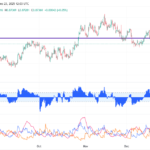- GBP/USD touched its highest level in a month above 1.2970 on Monday.
- The near-term technical outlook points to overbought conditions for the pair.
- The economic calendar will not offer any high-impact data releases.
The persistent selling pressure surrounding the US Dollar (USD) on Friday allowed GBP/USD to extend its weekly rally. After gaining nearly 1.5% in the previous week, the pair continued to stretch higher and reached its strongest level in a month above 1.2970.
Although last week’s upbeat data releases from the US caused markets to refrain from pricing in a 50 basis points (bps) rate cut in September, the USD struggled to outperform its rivals as risk flows dominated the action in financial markets.
Early Monday, US stock index futures trade little changed on the day, while the 10-year US Treasury bond yield stays in negative territory below 3.9%, making it difficult for the USD to stay resilient against its rivals.
The economic calendar will not feature any data releases that could impact the USD’s valuation in the second half of the day. In case markets adopt a cautious stance in the American session, GBP/USD could start correcting lower.
In the meantime, market participants will pay close attention to comments from Federal Reserve (Fed) Governor Christopher Waller later in the day. Over the weekend, San Francisco Fed President Mary Daly told the Financial Times that it is time to consider adjusting borrowing costs. Additionally, Chicago Fed President Austan Goolsbee argued that not lowering the policy rate in September could damage the labour market.
GBP/USD Technical Analysis
The Relative Strength Index (RSI) indicator on the 4-hour chart climbed above 80 on Monday, reflecting technically overbought conditions for GBP/USD. In case the pair stages a technical correction, immediate support is located at 1.2950 (Fibonacci 78.6% retracement of the latest downtrend) before 1.2900 (Fibonacci 61.8% retracement, psychological level) and 1.2850 (Fibonacci 50% retracement level).
On the upside, 1.3000 (psychological level, static level) could be seen as next resistance before 1.3045 (beginning point of the downtrend, July 17 high).
Pound Sterling FAQs
The Pound Sterling (GBP) is the oldest currency in the world (886 AD) and the official currency of the United Kingdom. It is the fourth most traded unit for foreign exchange (FX) in the world, accounting for 12% of all transactions, averaging $630 billion a day, according to 2022 data. Its key trading pairs are GBP/USD, aka ‘Cable’, which accounts for 11% of FX, GBP/JPY, or the ‘Dragon’ as it is known by traders (3%), and EUR/GBP (2%). The Pound Sterling is issued by the Bank of England (BoE).
The single most important factor influencing the value of the Pound Sterling is monetary policy decided by the Bank of England. The BoE bases its decisions on whether it has achieved its primary goal of “price stability” – a steady inflation rate of around 2%. Its primary tool for achieving this is the adjustment of interest rates. When inflation is too high, the BoE will try to rein it in by raising interest rates, making it more expensive for people and businesses to access credit. This is generally positive for GBP, as higher interest rates make the UK a more attractive place for global investors to park their money. When inflation falls too low it is a sign economic growth is slowing. In this scenario, the BoE will consider lowering interest rates to cheapen credit so businesses will borrow more to invest in growth-generating projects.
Data releases gauge the health of the economy and can impact the value of the Pound Sterling. Indicators such as GDP, Manufacturing and Services PMIs, and employment can all influence the direction of the GBP. A strong economy is good for Sterling. Not only does it attract more foreign investment but it may encourage the BoE to put up interest rates, which will directly strengthen GBP. Otherwise, if economic data is weak, the Pound Sterling is likely to fall.
Another significant data release for the Pound Sterling is the Trade Balance. This indicator measures the difference between what a country earns from its exports and what it spends on imports over a given period. If a country produces highly sought-after exports, its currency will benefit purely from the extra demand created from foreign buyers seeking to purchase these goods. Therefore, a positive net Trade Balance strengthens a currency and vice versa for a negative balance.






















